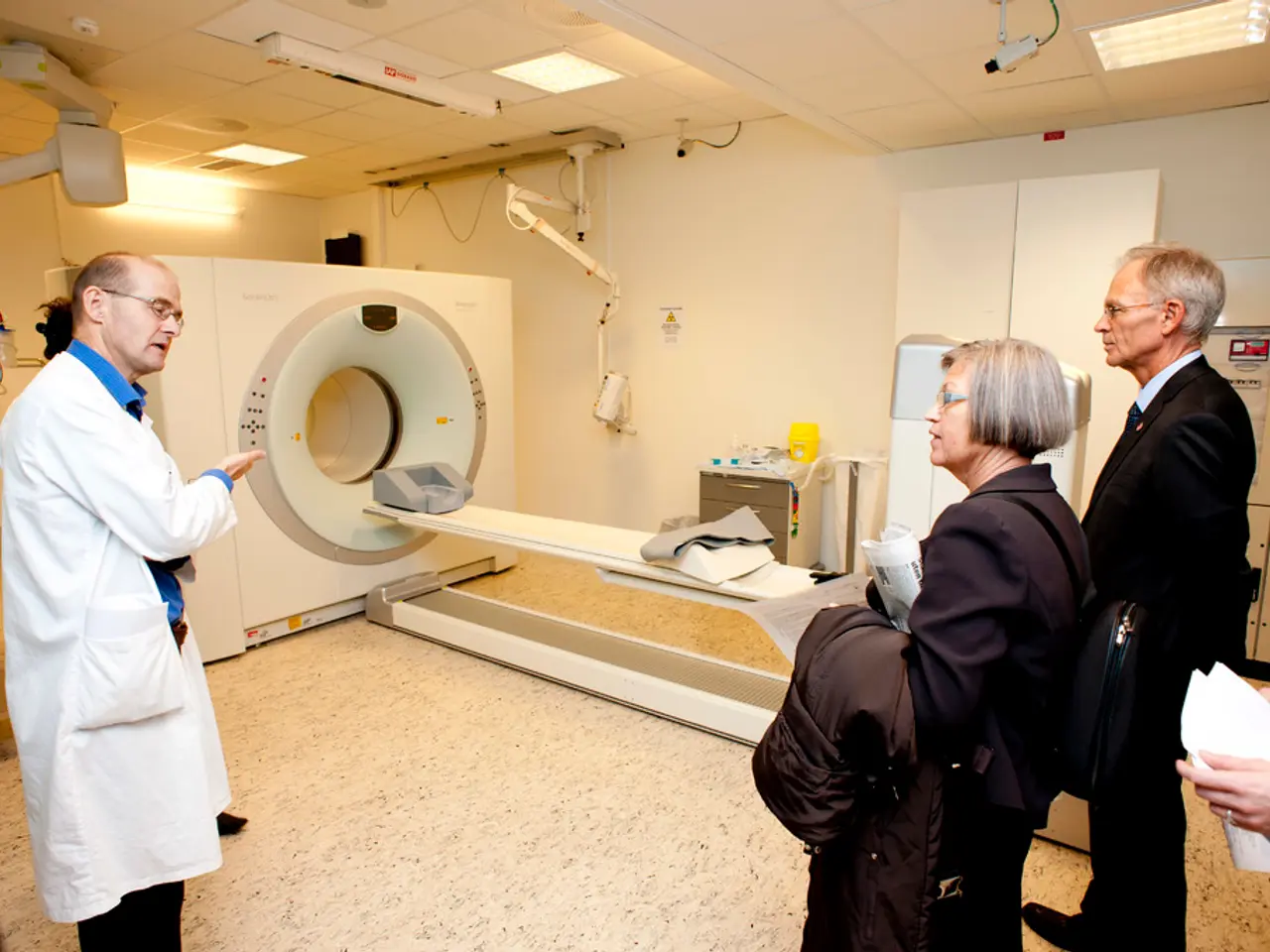Military in the U.S. adopts remote critical care technology to cater to active personnel and veterans
In the ever-evolving landscape of healthcare, government agencies continue to invest in telehealth services, recognising their potential to improve accessibility and efficiency. This article explores the Department of Defense's (DOD) telecritical care network, a significant stride in expanding healthcare services, particularly for remote and underserved communities.
The DOD is currently engaged in discussions with the Veterans Affairs (VA) to develop an interoperable federal telecritical care system. This system aims to provide remote support to onsite medical staff, enabling specialists to offer their expertise regardless of location. Maj. Nikhil Huprikar, Army chief of Pulmonary and Critical Care Medicine Service at Walter Reed National Military Medical Center, has discussed the utility and potential expansion of telecritical care within the DOD.
One of the key benefits of telecritical care is its ability to offer continuous care. For instance, intensive care unit rooms are now equipped with telehealth technologies that allow onsite pulmonary critical care doctors to sleep at night and return refreshed during daylight hours. This model has been particularly valued by Col. David De Blasio, chief of medicine at Womack Army Medical Center, due to a lack of trained staff.
The DOD's telecritical care network extends beyond traditional bedside care, potentially becoming handheld or facilitated with devices like GoPro. This network also includes collaboration with the Department of Health and Human Services, demonstrating a collective effort to improve connections between agencies and patients.
The DOD's National Emergency Tele-Critical Care Network, based in San Diego, plans to connect more sites for expansion. Telecritical care is aimed at helping people who may not have regular access to medical expertise, particularly in remote locations. Telecritical care in the DOD is intended to offer help to people in locations such as Japan, South Korea, Germany, and Kuwait.
The military is modernising its telehealth systems by implementing telecritical care programs. As the platform evolves, military medical specialists will have access to more advanced predictive analytics tools powered by artificial intelligence.
Despite the progress, there remains regulatory uncertainty about the long-term sustainability of telehealth policies. This uncertainty hinders investment and expansion efforts, as providers and investors seek clarity on future regulations. However, governments have continued to support telehealth through policy changes and extensions of temporary measures. For example, Medicare's telehealth reimbursement flexibilities have been extended until September 30, 2025, demonstrating ongoing commitment to telehealth.
In conclusion, the continued investment in telehealth reflects a commitment to improving healthcare access and efficiency, while addressing the challenges posed by regulatory uncertainties and the need for permanent legislative support. Telehealth makes care more accessible and convenient for veterans, and it is expected that these advancements will continue to shape the future of healthcare delivery.
Science and health-and-wellness intersect in the discussions between the DOD and Veterans Affairs to develop an interoperable federal telecritical care system. This system, powered by advanced telehealth technologies, aims to provide remote support to onsite medical staff and offer continuous care, ultimately expanding access to specialized medical expertise.




